IoT integration involves connecting various devices and sensors to a centralized cloud platform, enabling seamless communication and data exchange. This process allows businesses to collect and analyze relevant data generated by these devices in real-time. The integration fosters improved decision-making, resource management, and operational efficiency. By leveraging the Internet of Things (IoT) and cloud computing services, organizations can automate processes and enhance overall productivity.
Importance of Cloud Technology for SMEs
Cloud technology plays a critical role in the successful implementation of IoT integration for small and medium enterprises (SMEs). It offers scalable resources, enhanced data storage, and powerful analytics capabilities, allowing SMEs to harness the full potential of IoT. Below are key advantages of cloud technology for SMEs engaging in IoT integration.
| Advantages of Cloud Technology | Description |
| Cost Efficiency | Reduces the need for capital investment in hardware and on-premises infrastructure. |
| Scalability | Offers flexible resources that can grow with the business, accommodating increased data and device connections. |
| Accessibility | Provides remote access to data and applications, enabling seamless collaboration among teams. |
| Enhanced Security | Offers robust security measures to protect sensitive data and ensure compliance with regulations. |
| Data Backup and Recovery | Facilitates automatic data backup and disaster recovery options, minimizing data loss risks. |
SMEs adopting IoT integration in cloud technology are better positioned to compete in an increasingly digital landscape, optimizing operations and fostering innovation.
3 Benefits of IoT Integration for SMEs
Integrating Internet of Things (IoT) technology with cloud solutions provides small and medium-sized enterprises (SMEs) with various advantages. This section will discuss three significant benefits: improved efficiency and productivity, enhanced data security, and scalability and flexibility.
Improved Efficiency and Productivity
IoT integration allows SMEs to automate processes, monitor operations in real-time, and optimize resource allocation. This leads to fewer manual tasks, reduced errors, and faster decision-making, which in turn boosts overall productivity.
Enhanced Data Security
With IoT devices connected to cloud platforms, SMEs can implement advanced security measures. Cloud technology enables encrypted data storage and transmission, protecting sensitive information against unauthorized access and cyber threats.
Scalability and Flexibility
IoT integration in cloud technology offers SMEs the ability to scale their operations effortlessly. Businesses can adjust their resources as needed, whether it's increasing storage capacity or expanding their network of IoT devices. This agility is essential for responding to market changes or growing customer demands.
Understanding and leveraging these benefits of IoT integration, SMEs can enhance their operational effectiveness and ensure they remain competitive in a rapidly evolving business landscape.
Challenges of IoT Integration for SMEs
While IoT integration in cloud technology presents numerous advantages, it also comes with several challenges that small and medium-sized enterprises (SMEs) must navigate carefully. Understanding these obstacles is essential for making informed decisions during the integration process.

Data Privacy and Compliance
Data privacy is a significant concern when integrating IoT devices with cloud technology. SMEs must ensure that the data collected from IoT devices complies with relevant regulations, such as GDPR or CCPA. Failing to adequately protect customer information can lead to severe penalties and damage to reputation.
Complexity of Integration
Integrating IoT devices with existing cloud infrastructure can be complex. SMEs often face technical challenges that may require specialized skills and knowledge. This complexity can lead to longer implementation times and can disrupt daily operations.
Cost Considerations
Implementing IoT integration incurs various costs, which can be a barrier for SMEs with limited budgets. Initial investments in technology, infrastructure, and training can quickly add up. Additionally, ongoing operational costs must be considered to ensure the project remains sustainable in the long term.
Recognizing these challenges, SMEs can better prepare themselves for the intricacies of IoT integration in cloud technology. Awareness and proactive planning are critical to successfully overcoming these hurdles, and for those looking to navigate cloud transitions with confidence, our article Avoid Risks With This Comprehensive Public Cloud Migration Checklist offers essential guidance to ensure a smooth and secure migration process.
Best Practices for IoT Integration in Cloud Tech
Implementing IoT integration in cloud technology requires careful planning and execution. SMEs must adopt specific best practices to ensure a successful transition. This section outlines essential strategies, such as planning and strategy, choosing the right technology partners, and ensuring employee training and change management.
Planning and Strategy
A well-defined plan is the foundation of successful IoT integration. SMEs should assess their current IT infrastructure and identify specific goals for integrating IoT with cloud technology. Key steps in the planning phase include:
- Conducting a needs analysis
- Setting clear objectives
- Identifying key performance indicators (KPIs)
Choosing the Right Technology Partners
Selecting the appropriate technology partners is crucial for successful IoT integration. SMEs should consider various factors when evaluating potential partners, such as:
- Expertise in IoT and cloud technology
- Track record of successful integrations
- Support services and resources offered
Employee Training and Change Management
Employee training is vital for smooth integration of IoT in cloud technologies. A well-prepared workforce can adapt more effectively to new systems. Key training initiatives may include:
- Workshops on IoT and cloud technology concepts
- Hands-on training with new systems
- Regular updates and refresher courses
Implementing a change management strategy can facilitate employee acceptance. Key components of a change management plan include:
| Component | Description |
| Communication | Keeping employees informed about changes |
| Feedback Mechanism | Allowing employees to express concerns or suggestions |
| Support Resources | Providing access to support during the transition |
Focusing on these best practices, SMEs can effectively navigate the complexities of IoT integration in cloud technology.

Future Trends in IoT Integration for SMEs
As IoT and cloud technologies continue to advance, SMEs must understand emerging trends, potential benefits, challenges, and practical strategies to leverage these innovations effectively. The following outlines key developments and recommendations to help businesses stay competitive in this evolving landscape.
Evolution of IoT and Cloud Technology
The integration of Internet of Things (IoT) and cloud technology is evolving rapidly, and SMEs need to stay updated with the latest trends. Advances in artificial intelligence (AI), machine learning (ML), and edge computing are significantly shaping how IoT devices communicate and interact with cloud services. This evolution allows for real-time data processing and analytics, improving decision-making processes for SMEs.
Anticipated Benefits and Challenges
As SMEs embrace IoT integration in cloud technology, several benefits and challenges will arise.
| Benefits | Challenges |
| Enhanced operational efficiency by streamlining workflows. | Data privacy concerns due to increased data transmission. |
| Improved customer insights through data-driven decision-making. | Complexity in integrating various systems and devices. |
| Cost savings from optimized resource management. | Initial investment expenses for infrastructure and technology. |
5 Recommendations for SMEs Planning IoT Integration
To successfully navigate the integration of IoT in cloud technology, SMEs should consider the following recommendations:
- Evaluate Needs and Objectives: Identify specific business goals that IoT integration can address, such as reducing operational costs or improving customer service.
- Start Small: Begin with pilot projects to test the feasibility of IoT solutions before scaling them across the organization.
- Prioritize Security: Implement robust security measures to protect sensitive data and comply with relevant regulations.
- Invest in Training: Provide comprehensive training for employees to ensure they understand how to use new technologies effectively.
- Engage with Experts: Consult with IT professionals who specialize in cloud and IoT integration to guide the implementation process.
Where Technology Meets Transformation — LK Tech
Focusing on these aspects, SMEs can better position themselves for successful IoT integration within cloud technology, ultimately enhancing their operational capabilities and competitive edge. At LK Tech, we offer top-notch IT support tailored to your unique needs, helping you navigate complex tech landscapes with confidence.
Our team brings both expertise and a personalized approach to every solution we provide. When it comes to reliable Cincinnati IT companies, we stand out for our commitment to quality and innovation. Reach out to us today to explore how we can elevate your business through smart IT strategies.


